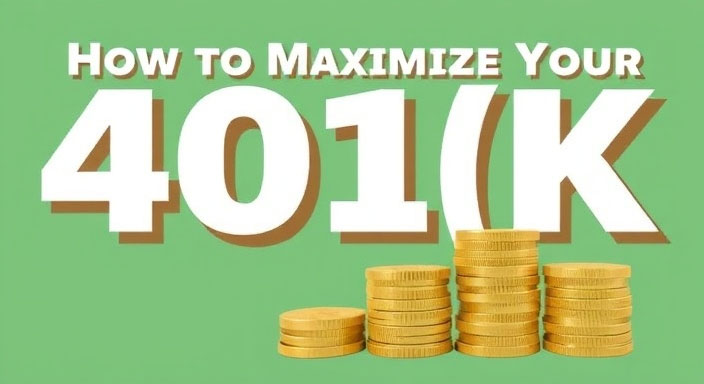The 401(k) is one of the most popular retirement savings plans in the United States. In this guide, we’ll explain what a 401(k) is, its pros and cons, how it can support your retirement after age 59 ½, and why starting early can maximize your retirement funds.
What is a 401(k)?
A 401(k) is a retirement savings plan sponsored by an employer, allowing employees to save and invest a portion of their income before taxes are taken out. Contributions are made with pre-tax dollars, meaning they lower your taxable income, and the money grows tax-free until retirement.
Employers often offer a matching contribution, which means they add a percentage of your contribution to your account. This matching is essentially “free money,” boosting your savings.

Pros and Cons of a 401(k)
Pros
- Tax Advantages: Contributions are tax-deferred, reducing taxable income and allowing the investments to grow tax-free until retirement.
- Employer Matching: Many employers match a portion of your contributions, which can significantly accelerate your retirement savings.
- High Contribution Limits: Compared to individual retirement accounts (IRAs), 401(k)s allow higher annual contributions.
- Automatic Savings: Contributions are automatically deducted from your paycheck, making saving easier and more consistent.
Cons
- Limited Investment Choices: 401(k) plans usually offer a limited selection of investment options, which may not suit everyone’s investment goals.
- Early Withdrawal Penalties: Withdrawals before age 59 ½ generally incur a 10% penalty, along with regular income tax.
- Required Minimum Distributions (RMDs): At age 73, you must start taking RMDs, which may impact your tax planning.

Retirement Income After Age 59 ½
At age 59 ½, you’re eligible to begin withdrawing from your 401(k) without incurring the 10% early withdrawal penalty. Here’s how much you can expect and how withdrawals work:
- Withdrawal Strategy: Financial advisors often recommend a “4% rule” for withdrawals. This rule suggests withdrawing about 4% of your total retirement savings each year to avoid running out of money.
- Calculating Expected Income: The amount you’ll have depends on your total contributions, employer match, and the growth of your investments. If you’ve contributed steadily and benefited from employer matching, you may have a substantial retirement fund.
- Tax Considerations: Withdrawals from a 401(k) are taxed as ordinary income. However, you can plan withdrawals strategically to minimize tax impact, especially if you have other sources of retirement income.

The Importance of Starting Early
One of the most powerful aspects of a 401(k) is the potential for compound growth over time. Here’s how starting early can make a difference:
- Compounding Interest: When you invest early, your contributions have more time to grow. Each year, your earnings generate returns, which then add to your initial investment.
- Example of Early Investment: Suppose you start investing $5,000 annually at age 25 with an average return of 7%. By age 60, you could have over $1.1 million saved. If you start at 35 with the same contributions, your savings may only reach around $540,000.
- Flexibility in Contributions: Starting early also gives you more flexibility to adjust contributions over time. Even small contributions made early can yield significant growth due to compounding.

How to Maximize Your 401(k) for a Comfortable Retirement
- Maximize Employer Match: Contribute enough to receive the full employer match, as it’s one of the fastest ways to increase your savings.
- Increase Contributions Gradually: Aim to increase your contribution rate by 1% each year, especially as your salary grows.
- Diversify Investments: Make sure your investments align with your retirement goals and risk tolerance, balancing between growth and security.
- Consult a Financial Advisor: For personalized advice on how to manage withdrawals, invest wisely, and optimize tax strategies, consider working with a financial advisor.
Conclusion: The 401(k) is a powerful tool for building retirement savings, offering tax benefits, employer matching, and the opportunity for long-term growth. Starting early and understanding your withdrawal options after age 59 ½ can help you achieve a financially comfortable retirement.